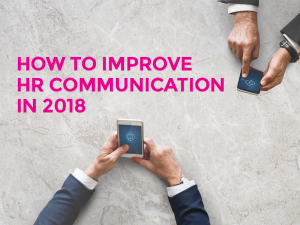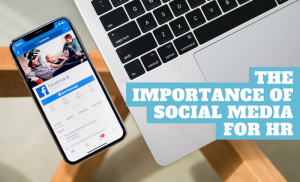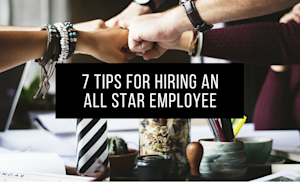At the beginning of COVID-19, many businesses had no choice but to adopt a remote operating model. Two years later, the situation has begun to improve and businesses are returning to the physical workspace. However, several companies have opted to keep remote and hybrid agreements in place.
Hiring remote employees has several benefits, including a larger talent pool to choose from. Unfortunately, it also increases the challenges associated with searching and assessing candidates to determine if they are a good fit for your company.
How can you ensure that you onboard the right remote employees without making costly mistakes?
Hiring Remote Talent Is Not Easy
Acquiring remote talent has several associated challenges. Evaluating candidates is a significant issue for many hiring managers. According to a Workable study published in 2020, for example, over 40% of participants expected evaluation to be one of the three most difficult aspects of remote hiring.
Evaluating remote candidates is difficult for several reasons, including:
Limited information about a candidate without references to contact;
The requirement for different soft skills, such as being a self-starter.
Another remote hiring challenge is keeping candidates interested and engaged. Ignoring this point could result in you missing out on someone who might have been a great fit; almost half of candidates have declined a job offer because they had a bad recruiting experience, according to PwC.
Several factors can impact the remote hiring experience and keeping candidates engaged. For example, time zones can hamper communication and result in a lengthy hiring process—during which the candidate might have found another job opportunity.
Other challenges associated with engaging remote candidates include:
Uninteresting job descriptions
Not communicating what you need from the candidate
Failing to communicate the benefits of your workplace
Failing to provide the support they require during the onboarding process
The Impacts of Poor Remote Hiring on Business Performance
Hiring ill-fitting team members has consequences, including the possibility of having to replace someone and restart the hiring process.
In the Muse’s Shift Shock survey, 80% of participants said that leaving a job that doesn’t meet your expectations within six months is okay, and 41% of individuals revealed that if a job turned out to be not as expected, they would give a new role 2–6 months before looking at moving elsewhere.
High employee turnover is a costly process for companies. As noted by Gallup, you can expect to pay between one-and-a-half and three times how much an employee earned annually to replace them. If you need to repeat the process frequently, you can see how it adds up fast.
Hiring remote employees that aren’t a good fit for your company means that engagement will likely be a challenge. A lack of engagement leads to lower productivity, which impacts your bottom line. According to HubSpot, lost productivity costs businesses in the US over $500 billion annually.
5-Step Checklist for Hiring the Right Remote Talent
Now that we’ve outlined the extent that poor remote hiring practices can cost your business, you’re ready to move toward making better decisions. Before hiring your next employee, implement the following five steps:
1. Refine Your Job Posting
When you publish an ad for remote workers, you’re competing with thousands of companies worldwide. As such, your posting must stand out. Your job posting must get to the point. Make it clear what you’re offering and what you require from candidates. Also, be fully transparent about what candidates can expect if they land the job.
Visuals are increasingly important online. Including some in your ads might help improve engagement. CareerBuilder found that openings with video received 34% more applications.
2. Consider Your First Impression
When hiring a remote candidate, trust your gut feeling. First impressions are important. Give serious consideration to how the interview went before offering a follow-up interview. If there are lingering questions, communicate them to the candidate as soon as possible. Some of the answers may provide more clarity than you were looking for.
3. Candidates Should Be Able to Work Independently
Hard skills are crucial. However, talent isn’t all you need in a candidate. Going remote means employees are moving into a work arrangement in which they need to function more independently—motivation and time management skills are key.
4. Ask for Proof of Work and References
Online, anyone can pretend to be an expert. Social media profiles are useful, but not everyone wants to build a presence—and you shouldn’t discount talented candidates because they aren’t on LinkedIn or Twitter. Make sure you ask for proof of work they’ve produced and relevant experience in the field. Many professionals have a portfolio they can share.
You might also consider getting a second or third opinion to determine how well your prospective hire will perform on the job. Get references from candidates to find out what others have said about them.
5. Give Candidates a Trial Run
Before making a final hiring decision, try to discover how employees will perform tasks specific to their role within the company. Depending on the job role, paying a candidate to do sample work will help you gauge better whether or not their skills are a good fit. Alternatively, you can opt for an initial trial period and make a decision based on how they perform over a lengthier period.
Trials and test projects are especially useful for hiring candidates for entry-level remote openings, as many won’t have in-depth work experience or a large professional network.
Hiring the Right Remote Employees Takes a Lot of Effort
Hiring remote employees can significantly broaden your talent pool, bringing in a diverse range of talented individuals to your company. Businesses need to ensure their hiring process is effective by putting in the effort to vet out the best remote talent.
Use this checklist to ensure you hire the right candidates without wasting your time and resources. Jobcast helps companies engage candidates from social media. Check out our pricing plans to find the best fit for your business.
Read More








